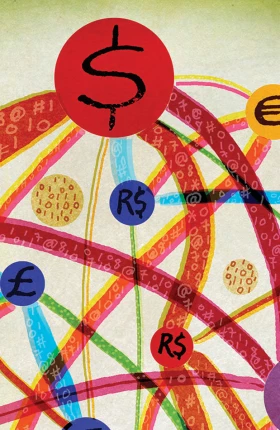Growth isn't a given in U.S. corporate and commercial banking. In fact, the latest earnings reports show revenues are shrinking at many leading banks while margins continue to tighten. Despite the rising urgency to boost financial returns, however, few corporate banks today think to systematically scrutinize their pricing practices and performance.
That is a costly mistake.
Well-executed pricing initiatives are a powerful lever for banks to review, optimize, and monitor prices charged for loans and fee services, such as treasury management and interest-rate derivatives. Repricing is a low-risk, low-cost way to improve top- and bottom-line growth, even when returns on equity and organic revenue growth are stalled.
Instead, most commercial and corporate banks remain mired in the industry's pricing status quo of weak strategies, anomalous and counterproductive pricing practices, adverse sales incentives, and little governance or discipline to enforce price targets.
Our client work, including comprehensive case studies of more than a dozen global, U.S., and regional firms, shows that banks often fall victim to seven classic pricing sins that undermine their margins and growth potential.
1. Marginal-Cost Pricing
Banks with high fixed costs focus on raising incremental revenue to defray those costs. But when that incremental revenue covers only the marginal cost, banks accumulate clients that don’t meet margin thresholds—sometimes lots of them. At one bank we studied, 17 percent of clients were unprofitable on a variable basis and an additional 15 percent were unprofitable on a full-cost basis.
2. Failure to Segment
Wholesale contracts allow banks to price clients individually, based on competitive intensity and bargaining power. Still, many firms fail to segment their customers in even the most basic fashion—for example, by size, price sensitivity, or growth potential. As a result, pricing and discounting become random. Smaller customers are sometimes charged less than large clients that provide more business. Or relatively “price insensitive” segments are assessed low prices while growth segments are hit with flat fees.
3. Bungled Bundling
Bundled pricing can boost revenue by supporting cross-sales, but it costs banks a bundle when it is poorly structured or executed. One common scenario: athe profitable products and retains the subsidized ones.
4. One-Way-Street Volume Discounts
Similarly, a client's transactions may decline over time while the pricing level remains unchanged. This can result when the original pricing was not “tiered” to volume ranges, or when a bank doesn’t effectively track changes in actual volumes over time. In one set of banks we studied, there was almost no correlation whatsoever between price and actual volume.
5. Service Creep and Other Omitted Charges
Service creep is common—and costly—in corporate banking as it is in other industries with recurring revenue streams. As much as 15 percent of revenue can be lost as a result of “leakage” (not billing for all services rendered) and “slippage” (failure to charge for services appearing in the fee schedule). The usual culprits are waived fees, creeping client-requested customization of services at no charge, and pricing that fails to factor in all costs of service.
6. Pricing Senility
In our experience, very few banks systematically track and update prices charged to each client. Most firms depend on generic, across-the-board pricing adjustments. At many banks, in fact, up to 20 percent of client contracts hadn't been revised at all in more than 10 years—and sometimes not even in 20 years. Based on inflation alone—roughly 3 percent per year—prices could otherwise have increased by a third during that lost decade.
7. Adverse Sales Incentives
In pursuit of market share, sales incentives often blindly reward revenue growth over margins. This leads relationship managers to retain or chase clients at any price. The result is soft pricing and reduced margins.
Fortunate are the relatively few banks that reject the pricing status quo and choose instead to undertake systematic repricing initiatives. They methodically scrutinize, measure, and optimize every element of their pricing performance—from discounting to fee levels and structures, sales incentives, and overall governance. The results can be spectacular. Focused repricing efforts can boost total revenues by 5 to 10 percent, net of attrition—a no-cost, low-risk gain that drops straight to the bottom line.
This column was originally published at www.AmericanBanker.com . It is reposted here with permission of the publisher.







